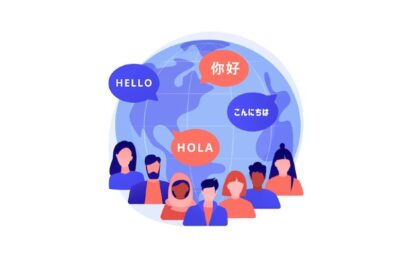In an increasingly interconnected world, where borders are virtually erased by the digital realm, the role of translators has become pivotal. Professional translators, with their linguistic prowess and cultural understanding, navigate the complex terrain of converting one language into another. The dynamics of translation extend far beyond mere language conversion; it involves a delicate interplay of cultural nuances, idiomatic expressions, and the context in which the content is embedded. This article explores the multifaceted nature of translation, shedding light on the indispensable role played by professional translators.
The Art and Science of Translation
Translation is both an art and a science. It requires a deep understanding of not just the source and target languages, but also the cultural contexts in which these languages operate. Professional translators are akin to linguistic alchemists, transforming the essence of a text while preserving its meaning and intent. They decode idioms, decipher colloquialisms, and ensure that the translated text resonates with the same impact as the original.
Key Points:
- Translation as an art and science.
- Understanding source and target languages.
- Preserving meaning and intent.
- Decoding idioms and colloquialisms.
Cultural Sensitivity in Translation
One of the most critical aspects of translation is cultural sensitivity. Languages are deeply intertwined with the cultures they originate from, and a failure to grasp cultural nuances can result in misinterpretation. Professional translators possess not only linguistic expertise but also a profound understanding of the cultural underpinnings. They bridge the gap between languages, ensuring that the translated content is not only accurate but also culturally resonant.
Key Points:
- Importance of cultural sensitivity in translation.
- Linguistic expertise coupled with cultural understanding.
- Bridging the gap between languages and cultures.
The Role of Technology in Translation
In the contemporary landscape, technology has revolutionized the field of translation. Machine Translation (MT) tools have become ubiquitous, offering quick and automated translations. However, the nuanced nature of language and the intricacies of cultural context often elude these tools. Professional translators from https://gotranscript.com/ leverage technology as an aid rather than a replacement. They use tools for efficiency but rely on their expertise to ensure accuracy and cultural relevance.
Key Points:
- Technology’s impact on translation.
- Machine Translation as a tool.
- Professional translators leveraging technology.
- Balancing efficiency with accuracy.
The Precision of Legal and Technical Translation
Legal and technical documents demand a level of precision that goes beyond linguistic fluency. Professional translators specializing in these domains navigate through complex terminologies, ensuring that every word is accurately translated without losing its legal or technical significance. Errors in translation in these fields can have far-reaching consequences, making the role of professional translators indispensable.
Key Points:
- Precision in legal and technical translation.
- Navigating complex terminologies.
- Avoiding errors with far-reaching consequences.
Challenges Faced by Professional Translators
While professional translators are adept at their craft, they face unique challenges. One such challenge is the untranslatable. Certain words, expressions, or cultural references have no direct equivalent in another language, posing a dilemma for translators. They must employ creativity and linguistic finesse to convey the essence of the untranslatable in a way that resonates with the target audience.
Key Points:
- Dealing with the untranslatable.
- Employing creativity and linguistic finesse.
- Ensuring resonance with the target audience.
The Business of Translation: Meeting Client Expectations
In the world of professional translation, meeting client expectations is paramount. This involves not only accurate language conversion but also adherence to deadlines and client specifications. Professional translators often work in collaboration with clients, maintaining open lines of communication to address queries and ensure that the final product aligns with the client’s vision.
Key Points:
- Meeting client expectations.
- Adherence to deadlines and specifications.
- Collaboration and communication with clients.
Continuous Learning in the Field of Translation
Language is dynamic, and so is the field of translation. Professional translators engage in continuous learning to stay abreast of linguistic developments, cultural shifts, and advancements in technology. This commitment to ongoing education ensures that they remain at the forefront of their field, offering clients the most accurate and culturally relevant translations.
Key Points:
- Language as dynamic.
- Continuous learning in translation.
- Staying abreast of linguistic, cultural, and technological developments.
Conclusion
In the intricate web of global communication, professional translators stand as unsung heroes, facilitating understanding and connection across linguistic and cultural divides. Their expertise goes beyond linguistic fluency; it encompasses a profound grasp of cultural subtleties, a keen awareness of the challenges posed by various domains, and an unwavering commitment to precision. As technology evolves, the dynamics of translation continue to shift, but the role of professional translators remains central in ensuring that the essence of communication transcends language barriers. The world may be interconnected, but it is the skilful hands and discerning minds of professional translators that navigate the currents of translation, steering the ship of understanding through the vast ocean of languages.

